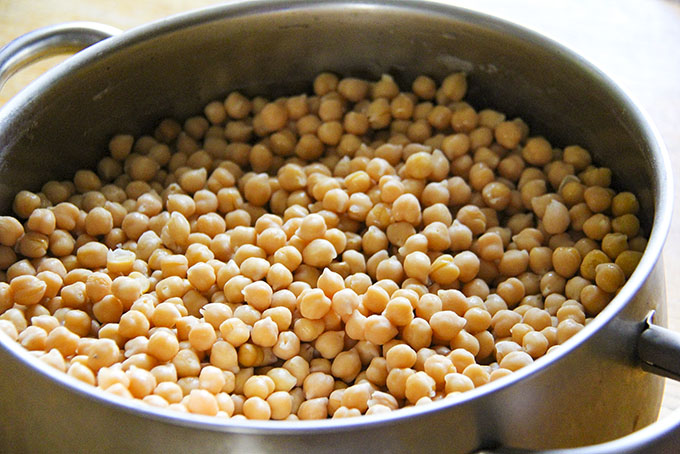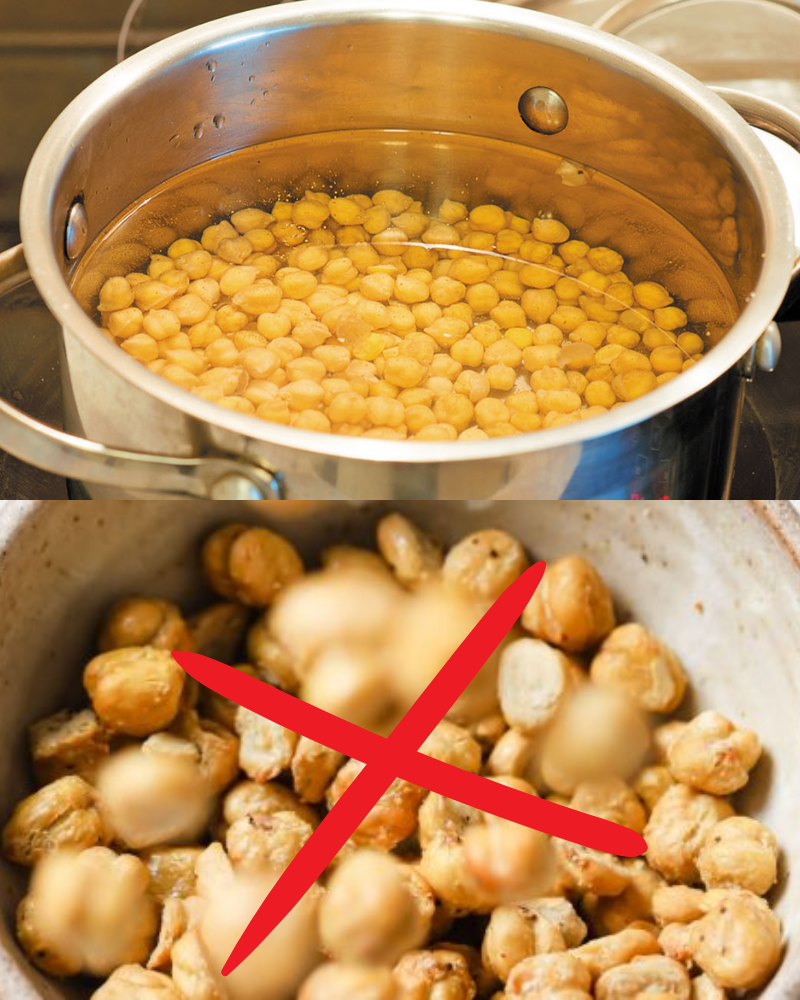Don’t forget to always choose high-quality legumes and take the time to prepare them properly to enjoy healthy and delicious dishes. If you’d like to learn more about legumes and cooking techniques, check out our blog for more articles and recipes.
Chickpeas are one of the most versatile and nutritious legumes, perfect for a wide range of dishes — from sides and salads to soups and hearty mains.
However, improper cooking can ruin both their flavor and texture, resulting in an unsatisfying meal. In this article, we’ll explore the most common mistakes when cooking chickpeas and share useful tips on how to avoid them for the best results.

1. Not Soaking the Chickpeas
One of the most common mistakes is skipping the soaking step before cooking. Soaking is essential for reducing cooking time and making chickpeas easier to digest. Without it, chickpeas take much longer to cook and are more likely to end up hard or undercooked.
Solution:
Soak the chickpeas in cold water for at least 12 hours, or ideally overnight. If you’re short on time, try the quick-soak method: bring the chickpeas to a boil in water, then turn off the heat and let them sit for about an hour. While this method is faster, it’s not always as effective as traditional soaking.
2. Not Changing the Cooking Water
Another common mistake is not changing the water during cooking. The water used to cook chickpeas contains compounds that can make them harder to digest. Continuing to cook them in the same water can also negatively affect their texture and taste.
Solution:
For better results, change the water at least once during cooking. After the initial boil, drain the chickpeas and add fresh water. This helps eliminate unwanted substances and enhances the final quality of your dish.

3. Adding Salt Too Early
Many home cooks make the mistake of adding salt too early in the cooking process. Salt can toughen the chickpeas’ skins, making it harder for them to soften properly.
Solution:
Wait until the chickpeas are fully cooked and tender before adding salt. If you want more flavor during cooking, feel free to add herbs and spices like bay leaf, garlic, or rosemary — but hold off on the salt until the end.
Don’t forget to always choose high-quality legumes and take the time to prepare them properly to enjoy healthy and delicious dishes. If you’d like to learn more about legumes and cooking techniques, check out our blog for more articles and recipes.
Chickpeas are one of the most versatile and nutritious legumes, perfect for a wide range of dishes — from sides and salads to soups and hearty mains.
However, improper cooking can ruin both their flavor and texture, resulting in an unsatisfying meal. In this article, we’ll explore the most common mistakes when cooking chickpeas and share useful tips on how to avoid them for the best results.

1. Not Soaking the Chickpeas
One of the most common mistakes is skipping the soaking step before cooking. Soaking is essential for reducing cooking time and making chickpeas easier to digest. Without it, chickpeas take much longer to cook and are more likely to end up hard or undercooked.
Solution:
Soak the chickpeas in cold water for at least 12 hours, or ideally overnight. If you’re short on time, try the quick-soak method: bring the chickpeas to a boil in water, then turn off the heat and let them sit for about an hour. While this method is faster, it’s not always as effective as traditional soaking.
2. Not Changing the Cooking Water
Another common mistake is not changing the water during cooking. The water used to cook chickpeas contains compounds that can make them harder to digest. Continuing to cook them in the same water can also negatively affect their texture and taste.
Solution:
For better results, change the water at least once during cooking. After the initial boil, drain the chickpeas and add fresh water. This helps eliminate unwanted substances and enhances the final quality of your dish.

3. Adding Salt Too Early
Many home cooks make the mistake of adding salt too early in the cooking process. Salt can toughen the chickpeas’ skins, making it harder for them to soften properly.
Solution:
Wait until the chickpeas are fully cooked and tender before adding salt. If you want more flavor during cooking, feel free to add herbs and spices like bay leaf, garlic, or rosemary — but hold off on the salt until the end.

